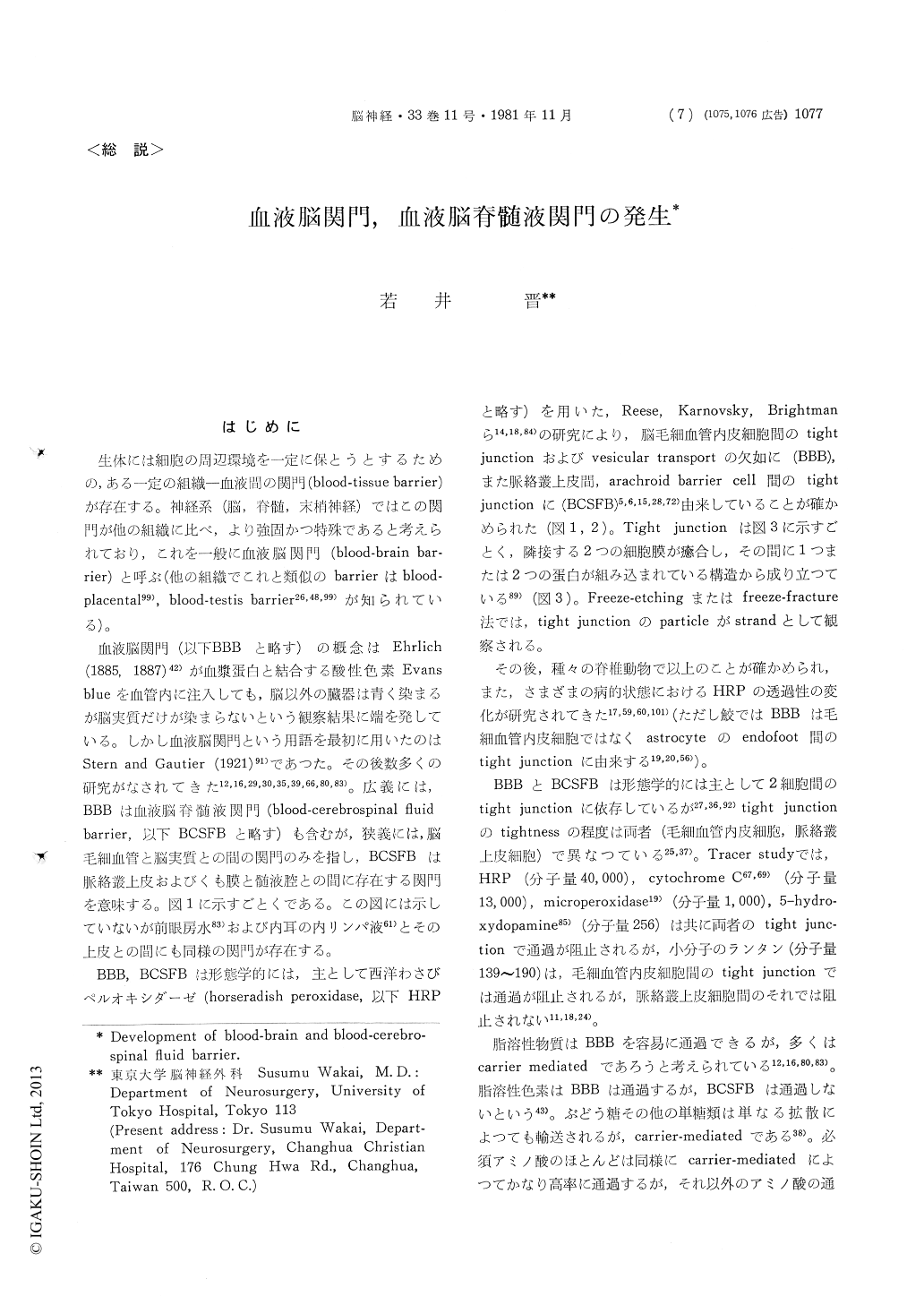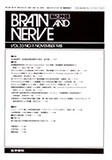Japanese
English
- 有料閲覧
- Abstract 文献概要
- 1ページ目 Look Inside
はじめに
生体には細胞の周辺環境を一定に保とうとするための,ある一定の組織—血液間の関門(blood-tissue barrier)が存在する。神経系(脳,脊髄,末梢神経)ではこの関門が他の組織に比べ,より強固かつ特殊であると考えられており,これを一般に血液脳関門(blood-brain bar—rier)と呼ぶ(他の組織でこれと類似のbarrierはblood—placental99),blood-testis barrier26,48,99)が知られている)。
血液脳関門(以下BBBと略す)の概念はEhrlich(1885,1887)42)が血漿蛋白と結合する酸性色素Evans blueを血管内に注入しても,脳以外の臓器は青く染まるが脳実質だけが染まらないという観察結果に端を発している。しかし血液脳関門という用語を最初に用いたのはStern and Gautier (1921)91)であつた。その後数多くの研究がなされてきた12,16,29,30,35,39,66,80,83)。広義には,BBBは血液脳脊髄液関門(blood-cerebrospinal fluidbarrier,以下BCSFBと略す)も含むが,狭義には,脳毛細血管と脳実質との間の関門のみを指し,BCSFBは脈絡叢上皮およびくも膜と髄液腔との間に存在する関門を意味する。図1に示すごとくである。この図には示していないが前眼房水83)および内耳の内リンパ液61)とその上皮との間にも同様の関門が存在する。
In this article, the author reviewed the world literatures concerning the development of blood-brain (BBB) and blood-cerebrospinal fluid barrier (BCSFB) in both humans and animals. The author also briefly reviewed the results of his investiga-tions on the development of these barriers to horseradish peroxidase (HRP) in chick embryos. The barriers to water-soluble macromolecules are likely to develop almost completely before birth in humans as well as in experimental animals. However, the timing of their completion is different between BBB and BCSFB. This may reflect the different nature of the tight junctions between capillary endothelia and choroidal epithelia.
BBB and BCSFB to lipid soluble substances, water-soluble low molecular particles and electro-lytes develops in different manners and timing. Development of selective barrier or transport sys-tem of metabolically active substances such as D-glucose or essential amino acids may be roughly synchronous to the maturation process of the brain and become fully effective after complete evolution of BBB and BCSFB to macromolecules.
To study development of BBB and BCSFB is of great importance for understanding the pathogenesis of kernicterus and various CNS malformations.

Copyright © 1981, Igaku-Shoin Ltd. All rights reserved.


